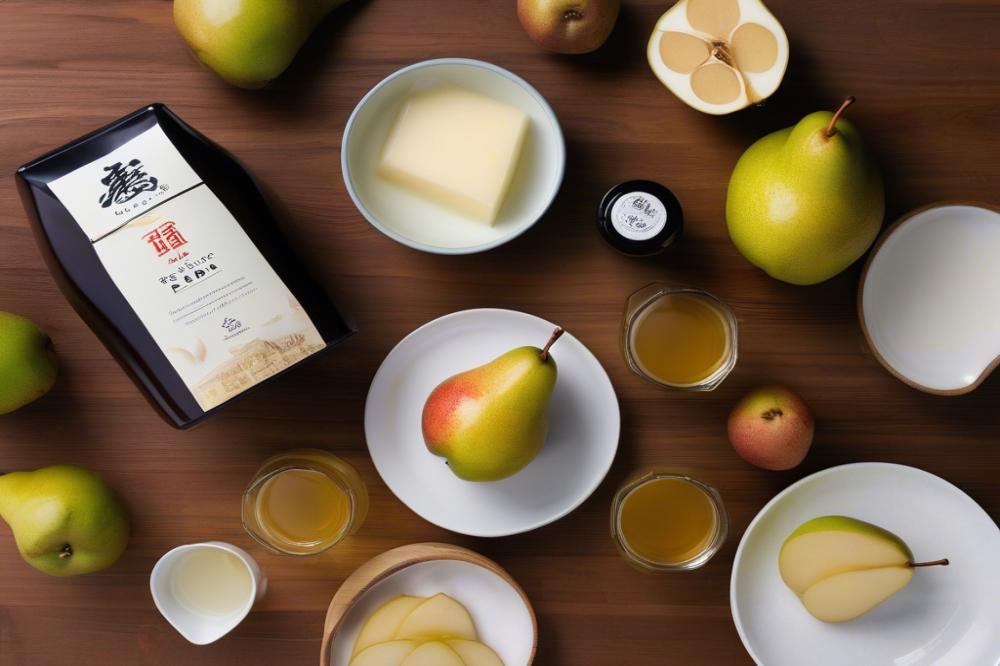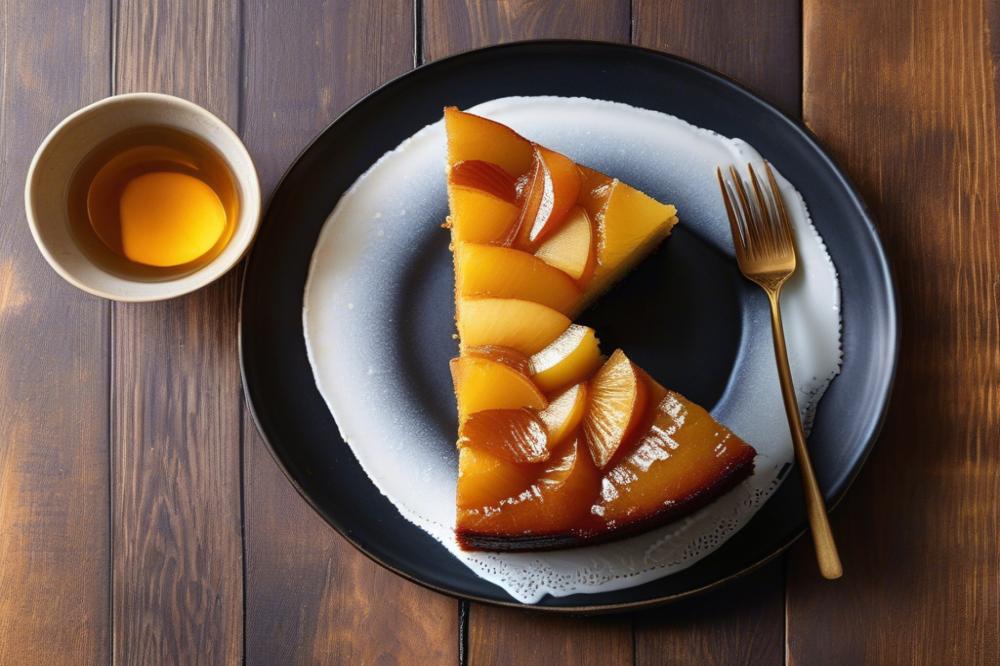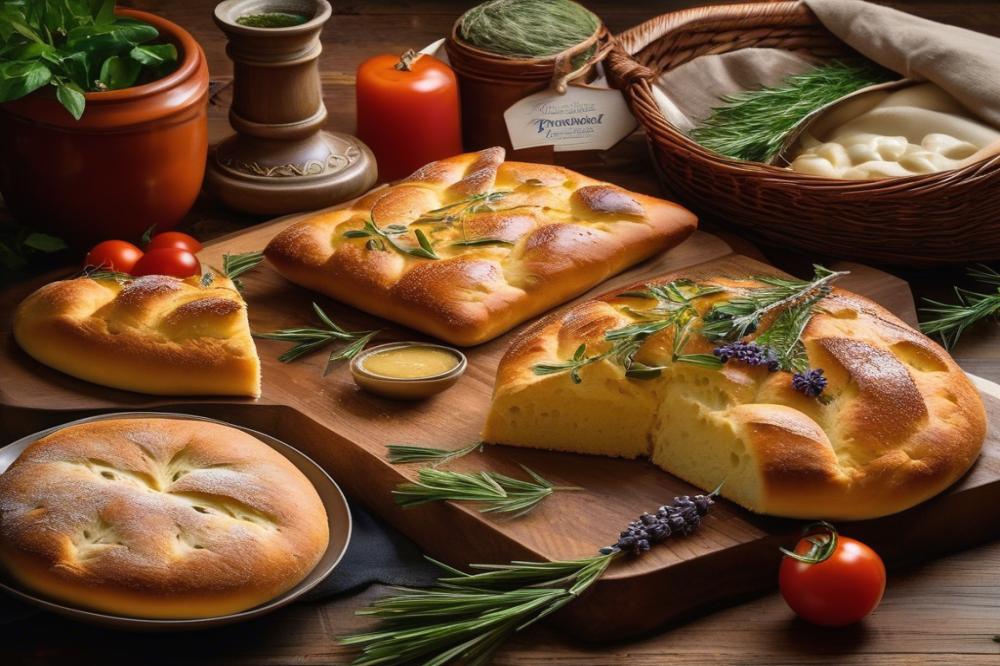Introduction
Sake holds a special place in the realm of Japanese cuisine. This traditional beverage, made from fermented rice, is not just a drink but a part of many cultural rites and celebrations. It often accompanies meals and social gatherings, enriching the experience with its unique flavors and warmth. Sake is synonymous with hospitality and represents a deep-rooted tradition in Japan.
Now, let’s turn our attention to a delightful dessert: the Upside-Down Cake featuring pear. This cake is a delicious representation of how fruit can shine in a baked good. pears, with their juicy sweetness, complement the buttery texture of the cake beautifully. When baked, they create a stunning visual display, especially when flipped over at the end. The caramelized fruit creates a sweet sauce that blankets the cake, making it even more inviting.
The recipe itself is a charming blend of traditional baking methods infused with modern flavors. Using fresh pears, this fruit cake boasts a depth of taste that celebrates both familiar and innovative elements. Together, these components craft a dessert that is more than just a treat; it’s a beautifully balanced experience that honors cultural fusion. The harmony of the ingredients allows anyone to enjoy this creative twist while experiencing a taste of Japanese elegance through the inspiration of sake.
The Essence of Sake

Sake is a traditional Japanese alcoholic beverage made from fermented rice. This drink has various types, each with its unique characteristics. Junmai, for instance, is pure rice sake with a full body. Ginjo features a more delicate flavor, often fruity and fragrant. Nigori is cloudy, unfiltered, and sweeter than other varieties, offering a different experience. These types can greatly influence the outcome of baked goods.
When used in baking, sake brings a depth of flavor that enhances the overall profile of a dish. Its taste is often described as subtly sweet with hints of floral or fruity notes. This quality pairs well with various ingredients, especially in desserts. Sake contributes an underlying richness that complements the sweetness of fruits like pears. It can transform a simple recipe like fruit cake into something extraordinary.
Incorporating alcohol into baking may seem unusual, but it has its merits. The use of sake in a sweet sauce, for example, creates a perfect drizzle for a cake. The caramelization process during baking is improved by the presence of alcohol, leading to enhanced flavors. Beyond taste, this cultural fusion offers an opportunity to explore flavors in new ways.
This blend of ingredients breathes life into desserts. Sake adds complexity that elevates traditional sweets into delightful treats. As you bite into a slice of pear Upside-Down Cake, the flavors meld beautifully. Each element works together, making every mouthful a memorable experience. Baking with sake opens doors to creativity, inviting anyone to try flavors that might surprise their palate.
Ingredients for Sake and Pear Upside-Down Cake

Creating a delicious Sake and Pear Upside-Down Cake requires a variety of ingredients that work together to form a decadent dessert. Here is a detailed list of what you will need:
- 3 ripe pears (about 1 ½ pounds): Choose juicy, firm pears. Bartlett or Anjou are great options. Their sweetness and smooth texture make them perfect for baking.
- 1 cup brown sugar: This ingredient contributes to the sweet sauce that forms the caramel base for the cake. It has rich flavors that complement the pears beautifully.
- ½ cup unsalted butter: Butter adds richness to the cake. It also helps create a tender crumb and enhances the overall flavor.
- 2 teaspoons vanilla extract: Vanilla brings warmth and depth. It balances the sweetness of the fruits and the cake.
- 1 ½ cups all-purpose flour: Essential for structure, the flour helps bind the ingredients together. It creates the cake’s base and gives body to the dessert.
- 1 teaspoon baking powder: This leavening agent helps the cake rise, making it light and airy. It plays a vital role in achieving the desired texture.
- ¼ teaspoon salt: A small amount of salt enhances all the flavors in the dish, making the sweet notes pop even more.
- 2 large eggs: Eggs serve as a binder, helping to hold the cake together. They also provide moisture and richness.
- ¾ cup sake: This Japanese rice wine adds a layer of complexity. The alcohol contributes a unique flavor that ties together the fruit and the cake.
Picking high-quality pears is crucial for this recipe. Look for ones that yield slightly to pressure, indicating ripeness. Avoid pears that are overly bruised or soft, as they may lose their shape during baking. Fresh fruit always brings the best flavors to a dessert.
Selecting premium sake is equally important. A well-flavored sake can elevate the dish. Look for a junmai or ginjo variety for a smoother taste. Its fruity notes will complement the pears and enhance the cake’s overall flavor profile.
This fusion of Japanese cuisine and traditional baking results in a delectable fruit cake. The caramel sauce that forms during cooking adds an inviting gloss and sweetness. Your dessert will impress with its rich flavors and enjoyable textures. Once you gather all the ingredients, you’re ready to start baking!
Step-by-Step Method

Detailed Instructions for Preparing the Cake Batter
Start by gathering all your ingredients. You’ll need flour, sugar, eggs, baking powder, and butter. Cream the butter and sugar together until they become light and fluffy. Next, add the eggs one at a time, mixing well after each addition. After that, sift together the flour and baking powder. Gradually incorporate the dry mixture into the wet ingredients. Stir just until combined; be careful not to overmix, as this can make your cake tough. The batter should be smooth. Set it aside while you prepare the pears for the next step.
How to Prepare the Pear for the Upside-Down Layer
Choose ripe pears that are still firm. This will help them hold their shape during baking. Start by peeling the fruit and removing the core. Slice the pears into wedges or rounds, depending on your preference. Arrange these slices in a circular pattern at the bottom of a greased cake pan. Make sure to fit them snugly. This design will be the base of the dessert. The fruit will become sweet and tender as it bakes, adding a lovely texture to the cake.
Tips for Achieving the Perfect Caramel Sauce
Caramel is key for this recipe. Combine sugar and a bit of water in a saucepan over medium heat. Stir gently until the sugar dissolves. Do not whisk vigorously; that can create unwanted crystals. Allow the mixture to boil without stirring until it turns a rich amber color. This usually takes about five to ten minutes. For a cultural fusion twist, carefully add a splash of alcohol at this point. The sake will mellow the sweetness and add depth. Once the caramel is ready, pour it evenly over the pears in the pan. This sweet sauce will soak into the fruit, enriching the overall flavor.
With these steps, you’ll be well on your way to creating a delightful fruit cake that combines traditional baking with innovative tastes from Japanese cuisine. Enjoy the process!
Baking Tips and Techniques
Baking an upside-down cake can be both a rewarding and an entertaining experience. This dessert, often enrobed in a sweet sauce, combines the flavors of fruit with a tender cake. When using pears, their delicate sweetness pairs beautifully with the caramel base. Understanding a few best practices can elevate your cake from good to great.
Best practices for baking an upside-down cake
Picking the right fruit is essential. Ripe pears work best. They should be soft but not overly mushy. When preparing the cake, butter the pan liberally to prevent sticking. A good layer of caramel becomes the magic that holds the fruit in place. Try using brown sugar in place of white sugar for deeper flavor.
How to ensure even cooking and presentation
Even cooking starts with proper oven temperature. Always preheat your oven before placing your cake inside. Baking at a steady temperature lets the cake rise evenly. Another important tip: avoid opening the oven door too frequently. This lets heat escape and can affect the rise. As for presentation, after baking, let the cake cool slightly. Invert it carefully onto a platter. This technique reveals the lovely arranged pears, creating an impressive centerpiece. For those who love Japanese cuisine, consider adding a touch of sake to the batter for a cultural fusion.
Troubleshooting common issues with fruit cakes
Sometimes, cakes do not turn out as expected. If your cake sticks to the pan, it likely needed more butter or cooling time. For those whose cakes are too dense, check that you didn’t overmix the batter. Air pockets make each bite light and fluffy. If your fruit is too soggy, avoid overcooking it. A gentle touch allows the pears to retain some texture rather than becoming mushy. Lastly, if you notice uneven baking, check your oven temperature. A thermometer can be helpful for accuracy. Happy baking!
Serving and Pairing Suggestions
When it comes to serving the pear upside-down cake, presentation plays a pivotal role. A warm slice can be placed on a simple white plate to highlight its inviting colors. Drizzle a sweet sauce over the top for an added touch. Garnish with a sprig of mint or a sprinkle of chopped nuts for contrast and texture. Using a dollop of whipped cream or a scoop of vanilla ice cream can elevate the experience, creating a delightful balance between warm and cold.
Recommended Beverages
This dessert pairs well with a range of beverages. A light, fruity wine will enhance the flavors found in the fruit cake. Consider offering a gentle sparkling wine, which adds a refreshing quality. For those who enjoy a touch of alcohol in their meal, try a light sake that complements the sweeter notes of the pears. Herbal tea also makes a lovely non-alcoholic alternative, bringing out the richness without overpowering the cake.
Variations and Adaptations
The recipe itself is open to interpretation. If you’re seeking a different flavor, swapping pears for other fruits can be delightful. Apples, peaches, or even berries can create interesting twists. To experiment with spices, try adding cinnamon or nutmeg for warmth. Some bakers might choose to add a layer of caramel sauce on the bottom of the pan, which creates an even stickier texture. This cultural fusion between traditional and modern techniques can yield a cake that feels both new and familiar, inviting everyone to enjoy a slice.
Bringing Cultures Together Through Baking
Embracing the fusion of flavors in your kitchen can lead to delightful surprises. This Sake and Pear Upside-Down Cake is a testament to how two worlds can blend in harmony. The traditional elements from Japan combined with comforting home baking create a new and exciting dessert. Experience how a simple recipe can unveil layers of taste that reflect both cultures.
Trying this cake at home can be a fun adventure. Gather some fresh pears, a bottle of your favorite sake, and dive into the process. With each step, you will find comfort in the familiar rhythm of baking while also discovering the unexpected flavors that sake brings. Enjoy the aromas filling your kitchen and the satisfaction of crafting something delicious.
Exploring other Asian-style baking recipes can inspire your culinary journey. Many Asian desserts offer diverse tastes and textures that can complement traditional Western treats. Don’t stop at just this cake. Challenge yourself by seeking out recipes that combine ingredients from different continents. The possibilities are exciting, and your taste buds will thank you.



